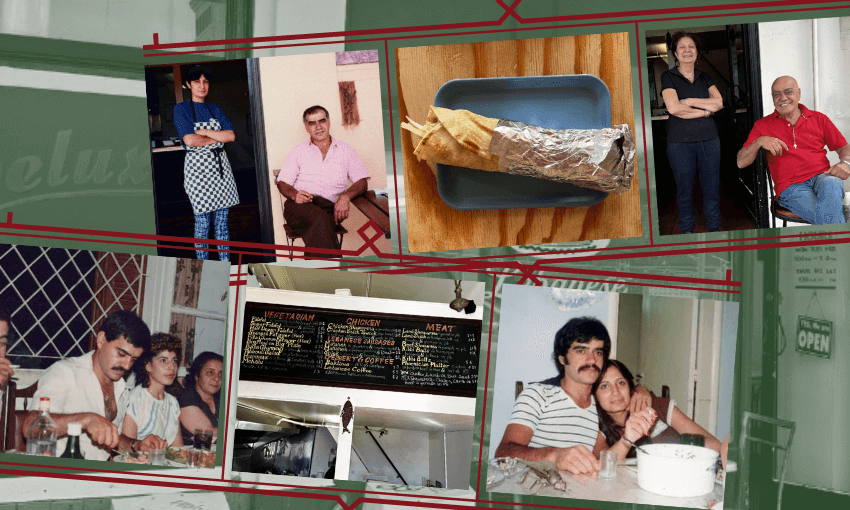At Supra, chef Thom Millot proves that brilliance doesn’t need endless equipment – just fire, guts and pure creativity.
Table Service is a column about food and hospitality in Wellington, by Nick Iles.
Ever since the rise of molecular gastronomy and the orchestral slow-mo reverence of Netflix’s Chef’s Table, we’ve fallen hard for the image of the high-tech kitchen. You know the look: sous-vide machine humming away in a tub of water, Thermomix spinning silently on the bench, a Pacojet promising silky-smooth everything. All of it signalling control, precision, mastery – but creating distance between a chef and their produce. A piece of meat cooked in a water bath will be perfectly predictable, and probably delicious, but it lacks the chaos and vitality of one seared in a blistering hot pan. Heat, seasoning, originality. That is all a great chef needs. Technology and gadgetry aren’t villains; it’s just that limitations are where creativity is truly born.
Nobody understands this better than Thom Millot, owner-operator of Supra, a 17-seat restaurant tucked away up a set of narrow stairs on Eva Street. His kitchen has a coal-fired barbecue oven, a small induction hob for prep… and that’s it. All he needs is a sharp knife, some flames, creativity, and his near-psychotic attention to detail.
Thom started his career at the age of 15, working the fryers at fast food joints in the Sydney suburbs. At the age of 19, he began an apprenticeship at a Tex-Mex spot, then moved on to a busy steakhouse. He was quickly stationed on the grill, a big responsibility for someone so young. The head chef saw something in him, and with good reason. Before long, he was routinely knocking out 250 covers a night with precision and control. He knew he had found his passion. He spent time travelling and fell in love with live fire cooking at some of the most exciting restaurants Australia has to offer: Rockpool, Porteño and Poly. Finally, he settled in Wellington and, in 2021, he opened Amok with his wife Tashie Piper. For three years, it blazed a trail in the capital, blending live fire cookery with immaculately sourced ingredients and a wine list full of originality.
But like all good things, and with the near impossibility of keeping a restaurant open in this climate, it came to an end. Amok closed, and Thom spent some time cooking at other restaurants. In 2024, he ventured out on his own again with Supra.
The space itself is a kind of magic: part speakeasy, part private dining room. Windows wrap around two sides, making it feel both hidden and wide open at the same time. Every night, the room fizzes with energy, the music up high and the talented staff waltzing around the space delivering plate after plate of truly world-class cookery.
Here, the menu shifts constantly. Thom responds to whatever’s at its best right now. New specials land weekly, depending on what produce is too good to ignore and whatever wild ideas he has been dreaming up. One thing that is always true is that it is all about bold, inventive and delicious flavours – and it all comes out of that one barbecue oven.
We start the evening with a snapper carpaccio. It is everything a raw fish dish should be, but with just that little bit more. The snapper is lightly beaten out till it is paper thin and garnished with macerated persimmon, which brings a tart punch. A ponzu dressing lifts and spikes with citrus, and a delicate macadamia ajo blanco lends a luxurious, almost whisper-soft finish. It is a masterclass in restraint and elegance.
Next up is a quite frankly outrageous raw beef dish. Six months in development, Thom has taken the classic combination of beef and oysters to a brand new place. Tri-tip is an unusual cut selection for a raw dish, meaning it is cut particularly fine and retains much more texture than a traditional tartare made with fillet. It is heavily spiced with a secret blend and is sweet, earthy and piquant at once, like it’s doing a cabaret quick-change act as you eat. Thom smokes oysters and combines them with crème fraîche, resulting in something ocean-sweet, velvety and full of saline elegance. Serving the beef and smoked oyster cream on the half shell with a garnish of thin slices of Jerusalem artichoke turns the whole thing operatic: fatty, spicy, sour, chewy, smooth. It is a dish that I have genuinely thought about every single day since I ate it.
The headline act for the meal is the rack of lamb sourced from Conscious Valley, a high-welfare ethical farm in Wellington’s Ohariu Valley. The meat they produce is something quite special and can be seen popping up on menus across the city. Here, it has been brined for 24 hours before being left for a further two days to thoroughly dry. It is then set in the barbecue to roast without any additional fats or seasoning. At the halfway mark, it is smothered in a honey and black vinegar glaze and heavily dusted in cumin, coriander seed and fennel. The thick ribbon of fat on the edge is rendered into something quite obscene, and the eye of meat blushes perfectly. It’s the rack of lamb you’ve always dreamed of but never quite received, until now.
On the side is a cabbage that has been lacto-fermented for three days and then lightly charred and dusted with shiitake powder. It is an uber-cabbage that has had all of its natural sweetness and umami brought forward. To finish, a fennel puree and a jus made from the bones of the lamb provide perfect balance. Sweet, savoury, fatty, all clicking into place like it was always meant to be. You’d have to be a better person than me not to pick up the bone and gnaw until there is nothing left. It is without question the single best plate of food I have eaten this year.
None of this is a fluke. The menu goes on, playfully riffing on things you recognise and showing you things you never dreamed of. Thom’s focaccia is a revelation; it rises tall but not showy, all sour and savoury and rich. The duck liver parfait is a perfect rendition, accompanied by a zesty, bitter marmalade – all candied peel and deep citrus. The pumpkin gnocchi are pillow-soft and sing with sweetness before grounding themselves in hazelnuts and crispy sage. Brown butter brings the toastiness, and a genius touch of sharp black vinegar cuts through it all. A lacy peppered cheese cracker on top gives cacio e pepe energy, distilled to a single, brilliant disc.
It’s rare to witness genius up close: one man, in a tiny kitchen, turning out dishes this bold and brilliant. Thom sources every ingredient with care before filtering it through his singular vision and that one charcoal barbecue oven. Supra is the kind of restaurant this city should be parading through the streets, high on its shoulders for all to see.





